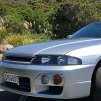44psi, daily drive?
Announcements
-
Similar Content
-
Latest Posts
-
you can enter your VIN (the original, japanese one) here to find the correct part#: https://www.amayama.com/en/genuine-catalogs/nissan however, after all this time it is more likely to be a wiring issue than the sender
-
And yes, put in the restrictor while you are there; a standard engine is fine with a little less oil and you are less likely to run out of oil if you have sustained high revs for any reason eg visit a track one day. How did you clean the cooling system
-
I didn't think about how a circle works before, dumb. Before, I had .9mm restrictor bolts but I can't use these cause they were shorter aluminium bolts that just tear off their threads when tightening since the OEM lines are thicker than the shitty braided one that was installed previously. Now I use longer 1mm stainless steel restrictor bolts. I think the difference will not affect the health of the turbos, but I guess I'll have to drill out the main feed bolt as I agree multiple restrictions sound dodgy. The one that was installed with the braided line was just too short, but completely without a restrictive hole.
-






Recommended Posts
Create an account or sign in to comment
You need to be a member in order to leave a comment
Create an account
Sign up for a new account in our community. It's easy!
Register a new accountSign in
Already have an account? Sign in here.
Sign In Now